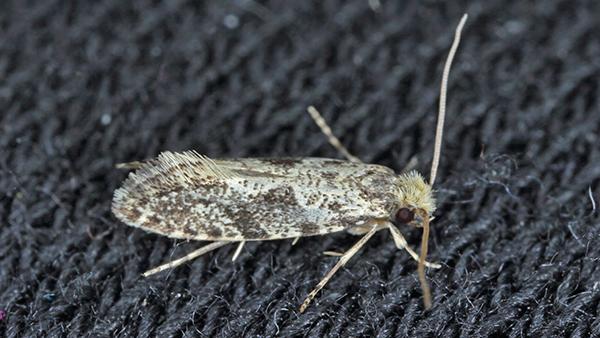Indian meal moths are common household pests that love to ruin stored dried goods, which is why they’re also called pantry moths, flour moths, or grain moths. These insects are responsible for food damage in homes, restaurants, and grocery stores across the United States, and Houston is no exception.
These moths love to lay their eggs in stored flour, grains, seeds, dried fruits, pet foods, and cornmeal. While they don’t spread disease or pose any other threat to human health, these moths can ruin weeks’ or even months’ worth of food stores. They’re especially dangerous to bakeries and grocery stores, where they can destroy thousands of dollars in inventory.
Pantry Moth Facts
Pantry moth adults are small (wingspan around 5/8 of an inch) with reddish-brown and charcoal-gray forewings. Adult females can lay up to 400 eggs apiece, and they seek out convenient food sources where they can deposit these eggs. The adults don’t eat your flour and grains – the larvae do. Once they hatch, pantry moth larvae work quickly to start devouring food. These larvae look like shiny, white grubworms, though they can become other colors, depending on their food source. The larvae are small, only reaching about half an inch in length just before pupating.
Pantry moth larvae aren’t like cockroaches – they don’t contaminate your food with deadly diseases when they eat through it. However, they spin silk, drop feces, shed skins, and leave eggshells in food stores. These contaminants are impossible to remove from food stores once they’re in them, which is why most of the costs incurred from pantry moth damage result from having to throw out foods rather than the moth larvae actually eating them.
Pantry Moth Prevention
There are two primary ways to get pantry moths: a female moth flies directly into your home and finds a suitable place to lay eggs, or you bring them into your home after purchasing contaminated grocery store goods. That means you need to take a two-pronged approach to prevent these icky pests. You’ll need to focus both on preventing adult pantry moths from getting into your house and on avoiding contaminating your existing food stores with larvae-ridden products.
Four tips to keep adult moths out include:
- Ensure all window and door screens are well-fitted and free of rips and tears.
- Keep blinds closed and outdoor lighting off when not in use.
- Store pantry foods in airtight, hard plastic containers so females cannot access them.
- Seal up cracks and holes in your home or commercial property’s exterior.
Four ways to avoid introducing pantry moth larvae into your existing food stores are:
- Inspect dried goods for things like shed skins, silk, and feces before bringing them into your home.
- Avoid introducing new dried goods into existing dried goods (i.e., don’t dump a new bag of flour in with your existing flour).
- Never buy food with damaged packaging – moth larvae can chew into or out of paper and plastic bags. Even cardboard isn’t safe.
- If you see signs of moths in existing pantry items, throw those items out right away to ensure the infestation doesn’t spread to other goods.
What To Do About Pantry Moths
If you already have pantry moths, they can be tough to get rid of. These moths tend to burrow into their food, meaning they’re not always obvious on the surface of your flour, cornmeal, or other foodstuffs. What’s more, it’s not like you want to spray all your pantry goods with chemicals to kill the larvae. That means you could wind up having to throw everything out.
Fortunately, there’s a better way. Here at All-Safe Pest & Termite, we’re equipped to deal with pantry moths at all stages of their lifecycle. If you’ve got flour bags full of little moth worms, give us a call or visit our contact page to get started on our effective home pest control services today.



